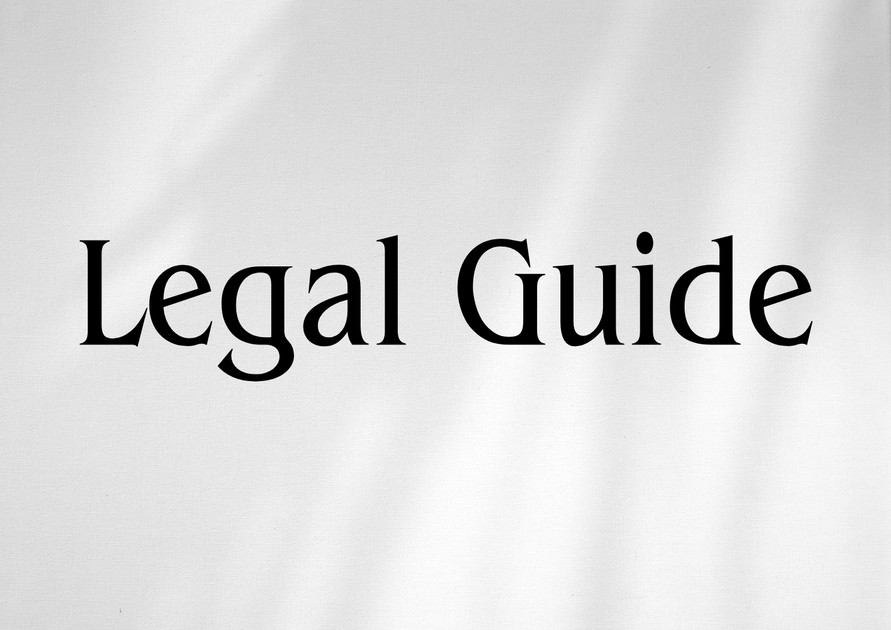Introduction
The evolving landscape of civil aviation in the United Arab Emirates (UAE) has elevated airworthiness and aircraft certification to a matter of strategic importance—both for legal compliance and for sustaining the UAE’s reputation as a premier international aviation hub. In light of recent regulatory updates, notably the Federal Law No. 20 of 2022 regarding the Regulation of Civil Aviation and its subsequent implementing decisions, understanding the nuances of airworthiness under UAE law is now critical for industry stakeholders. For airline operators, aircraft owners, technical managers, and aviation legal practitioners, robust knowledge of these frameworks aids in risk mitigation, optimizes operational continuity, and ensures alignment with both national and international standards.
This article provides an expert legal analysis of the UAE’s airworthiness regulations and aircraft certification requirements. Drawing on up-to-date legislation, including official sources such as the UAE Federal Legal Gazette, the Ministry of Justice, and the UAE General Civil Aviation Authority (GCAA), it explores the practical implications, compliance strategies, and risks businesses face under the new legal regime. The analysis highlights recent amendments, contrasts them with pre-2022 standards, and provides actionable advice for ensuring organizational compliance in an increasingly complex regulatory environment.
For businesses, executives, and legal advisors, this advisory note offers in-depth insights into what has changed, what remains critical, and how best to navigate airworthiness obligations under UAE law.
Table of Contents
- Overview of Airworthiness Under UAE Law
- Statutory Framework and Regulatory Bodies
- Breakdown of 2022-2025 Regulatory Updates
- Aircraft Certification: Types and Processes
- Obligations for Aircraft Owners and Operators
- Risks, Penalties, and Compliance Obligations
- Comparative Analysis: Previous vs. Current Laws
- Case Studies and Practical Applications
- Compliance Checklist and Practical Strategies
- Conclusion and Forward Outlook
Overview of Airworthiness Under UAE Law
Airworthiness is both a legal status and an engineering outcome, attesting that an aircraft meets the design, maintenance, and operational standards necessary for safe flight. Under UAE law, particularly Federal Law No. 20 of 2022 and supporting GCAA regulations, airworthiness is fundamentally tied to two key concepts: (1) certification—ensuring compliance as per issued documents, and (2) ongoing airworthiness management—maintaining that compliance throughout the aircraft’s operational lifecycle.
With the UAE’s position as a global aviation crossroads, strict adherence to international standards such as those mandated by the International Civil Aviation Organization (ICAO) is also required. The GCAA has incorporated Annex 8 (Airworthiness of Aircraft) and other pertinent ICAO annexes into the national legal framework. This dual compliance—local and international—creates both procedural complexity and heightened opportunities for regulatory oversight.
Statutory Framework and Regulatory Bodies
Core Legislation and Decrees
The UAE’s legislative scheme for airworthiness regulation comprises several laws, decrees, and administrative orders, including:
- Federal Law No. 20 of 2022 on the Regulation of Civil Aviation – the primary statute governing all aspects of civil aviation, airworthiness, and operator obligations.
- GCAA Civil Aviation Regulations (CARs), particularly CAR Part V (Airworthiness)
- Cabinet Resolution No. 23 of 2023 on Implementation Executive Regulations
- Ministerial Circulars and GCAA Safety Directives – offering technical guidance and updated requirements.
Regulatory Agencies
Primary regulatory and oversight functions are performed by:
- General Civil Aviation Authority (GCAA) – overall regulator, issues certifications (Certificates of Airworthiness, Permits, etc.), conducts inspections, enforcement, and license oversight.
- Ministry of Justice – supports legal enforcement and dispute resolution.
- Ministry of Interior – coordinates on aviation security and emergency response aspects.
Breakdown of 2022–2025 Regulatory Updates
Significant changes have been introduced over the last three years to align with international best practices, accommodate advanced air mobility (AAM), and strengthen the regulatory environment. Key highlights include:
- Expanded GCAA Authority: Enhanced power for GCAA in enforcement, investigations, and data-sharing.
- Introduction of Digital Certification: New online systems for application, issuance, and real-time validation of airworthiness certificates.
- New Obligations for Airlines and Lessors: Updated declaration, reporting, and record-keeping duties.
- Penalties and Administrative Fines: Introduction of progressive fine structures for repeat or serious non-compliance.
Recent updates also streamline appeals processes and clarify the rights of certificate holders in the event of administrative action by the GCAA.
| Regulatory Area | Pre-2022 Law | Post-2022 Updates |
|---|---|---|
| GCAA Powers | Limited enforcement tools; reliance on court injunctions | Expanded investigation and administrative penalty authority; immediate suspensions allowed |
| Certificate Issuance | Paper-based, in-person processes | Mandatory digital application and e-certificate issuance through GCAA portal |
| Reporting Duties | Annual or ad hoc, often manually submitted | Mandatory digital submission, increased frequency, and automatic compliance tracking |
| Penalties | Fixed fines; slow appeals | Progressive, risk-based penalty bands; expedited electronic appeals |
Aircraft Certification: Types and Processes
Certificate Types
Under UAE law, the main certification documents include:
- Certificate of Airworthiness (CofA): Confirms that the aircraft complies with type design and is safe for intended operation.
- Permit to Fly: Temporary certification for ferry flights, test operations, or delivery.
- Special Flight Permits: For aircraft not currently meeting airworthiness standards but safe for specific, controlled operations.
- Export Certificates of Airworthiness: Required for transferring aircraft out of the UAE registry.
The Approval Process
The airworthiness certification process is strictly regulated and involves several stages:
- Application Submission (now via GCAA digital portal)
- Technical Review and Initial Inspection
- Compliance Documentation (including maintenance records, modification approvals, etc.)
- GCAA Inspection and Flight Test (if required)
- Issuance of Certificate or Permit
- Ongoing Surveillance and Reviews (including random checks)
| Stage | Responsible Party | Key Documentation |
|---|---|---|
| Application | Operator/Owner | Completed digital application, supporting docs |
| Review | GCAA | Compliance checklists, prior certificates |
| Inspection | GCAA Inspectors | Aircraft logbooks, maintenance history |
| Issuance | GCAA | Certificate, digital record |
| Continuous Surveillance | Operator, GCAA | Ongoing records, compliance updates |
Obligations for Aircraft Owners and Operators
Legal Duties
Aircraft owners and operators are required to:
- Maintain Valid Certifications: Ensure that all aircraft hold a current Certificate of Airworthiness and, where applicable, valid permits for special operations.
- Comply With Maintenance Programs: Follow GCAA-approved maintenance schedules and employ certified maintenance providers.
- Report Deficiencies and Incidents: Immediately report any incident, defect, or event affecting safety to GCAA via the required digital channels.
- Provide Documentation Upon Request: Maintain and provide up-to-date logbooks, technical records, and compliance reports.
Record Keeping and Auditable Trails
The new legal regime creates a heightened emphasis on digital record keeping. All maintenance actions, modifications, and compliance events must be accessible for GCAA digital audit—failure to do so creates legal risk and can suspend certification status.
Risks, Penalties, and Compliance Obligations
Risks of Non-Compliance
The risks for failing to comply with aircraft certification rules under UAE law include:
- Administrative Sanctions: Suspension or cancellation of Certificates of Airworthiness or operational permits without prior court order.
- Fines: Substantial, risk-scaled administrative fines, which can escalate for repeat offenses (Cabinet Resolution No. 23 of 2023 specifies up to AED 1 million, depending on severity).
- Civil Liability: Exposure to damages claims for third party injuries or losses resulting from lack of airworthiness.
- Criminal Prosecution: In cases involving gross negligence, fraud, or endangerment of safety.
| Offense | Pre-2022 Penalty | Post-2022 Penalty |
|---|---|---|
| Operating without valid CofA | Fixed fine (AED 100,000) | Variable fine (AED 200K–1M); immediate suspension; possible criminal referral |
| Failure to report defect | Warning or minor fine | Substantial fine; mandatory compliance audit |
Illustrative Penalty Chart
Firms are advised to include a visual penalty chart mapping specific infractions to possible sanctions based on the new risk-based approach for client briefings and staff training.
Comparative Analysis: Previous vs. Current Laws
| Issue | Previous Law Approach | Current Law (2022 onwards) |
|---|---|---|
| Certification Process | Manual, slow processing; paper certificates | Digital applications; real-time tracking and authentication |
| Reporting and Recordkeeping | Physical records; provided on inspection | Mandatory digital trail and records; continuous compliance monitoring by GCAA |
| Penalty System | One-size-fits-all fines | Graduated penalties with enhanced enforcement |
| Operator Obligations | Annual reviews | Ongoing, continuous compliance expected |
Case Studies and Practical Applications
Case Study 1: Aircraft Return and Digital Certificate Transfer
A UAE-based airline prepares to return a leased Boeing 787. Under pre-2022 rules, certificate transfer required multiple in-person visits to GCAA offices. Now, using the GCAA’s digital portal, all compliance documentation, maintenance histories, and transfer applications are uploaded and verified electronically. Penalties for errors or omitted documents are automatically triggered, prompting immediate corrective actions before the aircraft’s return to the lessor—saving both time and potential financial exposure.
Case Study 2: Investigation Following Technical Incident
An unscheduled landing due to a detected systems fault prompts a GCAA investigation. The operator, complying with post-2022 rules, immediately provides full digital records—including maintenance actions, defect reports, and airworthiness review certificates. Because these records are digitally timestamped and auditable, the investigation proceeds swiftly, resulting in limited disruption and no sanctions.
In contrast, another operator without proper digital records faced substantial administrative fines and a 30-day suspension pending compliance audit.
Compliance Checklist and Practical Strategies
Recommended Visual: Compliance Checklist Graphic (for download by corporate clients)
Aircraft Certification Compliance Checklist
- Verify all current Certificates of Airworthiness and Special Permits are up-to-date in GCAA digital system
- Ensure maintenance records are fully digital, complete, and accessible
- Implement internal procedures for real-time reporting and submission of incidents or deficiencies
- Conduct regular internal audits to identify gaps and update compliance policies per GCAA safety directives
- Train all technical and operational staff on new digital processes and legal updates
Expert Guidance for UAE Companies
- Engage with specialised aviation legal counsel to review compliance programs
- Regularly monitor GCAA circulars and updates to adapt to evolving technical and documentary requirements
- Invest in digital compliance technologies and integrate with enterprise resources planning (ERP) systems for seamless data flow
- Develop incident response plans that include immediate legal reporting obligations and staff education modules
Conclusion and Forward Outlook
Airworthiness and aircraft certification are at the heart of aviation safety and legal compliance in the UAE’s dynamic regulatory environment. The shift towards digital processes, strengthened enforcement mechanisms, and closer alignment with ICAO standards signal the UAE’s commitment to international best practice and aviation excellence.
Going forward, organizations must prioritize proactive compliance not merely as a legal requisite but as a risk management imperative. As GCAA and federal authorities expand surveillance and real-time monitoring, early adoption of digital recordkeeping and process automation will provide competitive advantage and minimize the risk of costly, disruptive sanctions.
For corporate clients, aviation managers, and legal practitioners, staying informed on legislative developments and investing in integrated compliance strategies will be critical to sustain lawful, safe, and globally competitive aircraft operations across the UAE. The coming years will bring further regulatory evolutions as new technologies and operational models emerge; those best prepared will benefit most from the UAE’s growth as an aviation leader.
For tailored consultancy on airworthiness regulations or assistance with compliance program development, contact your legal advisor or the GCAA’s regulatory compliance desk.




